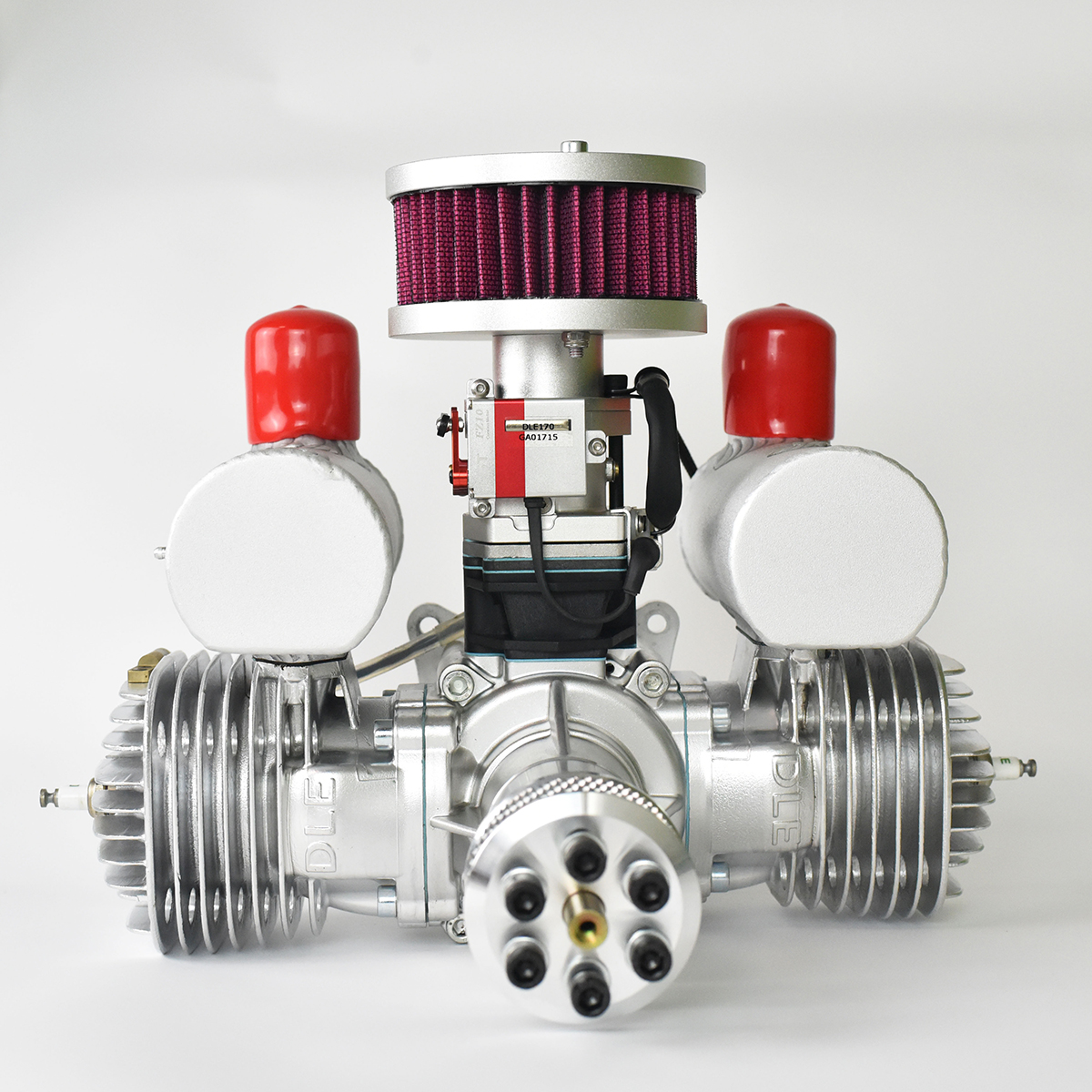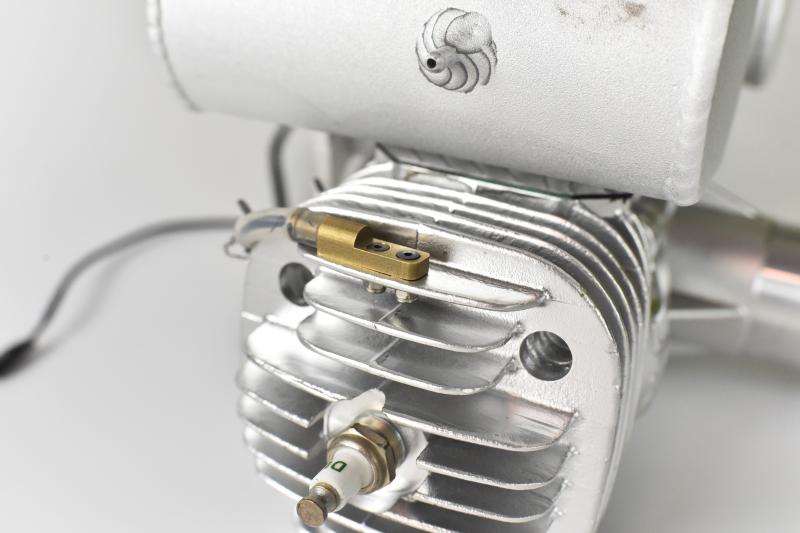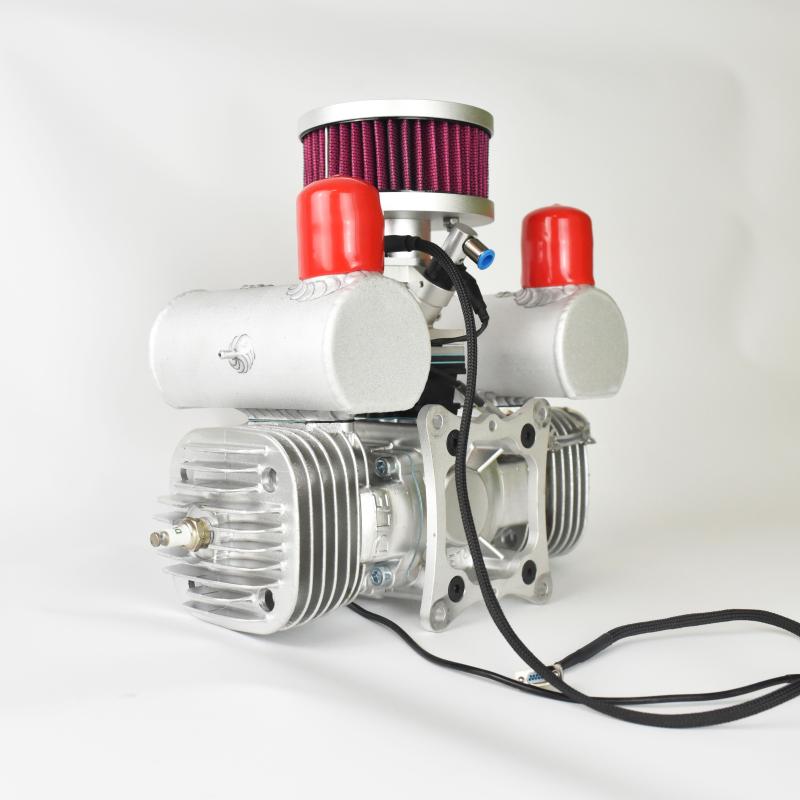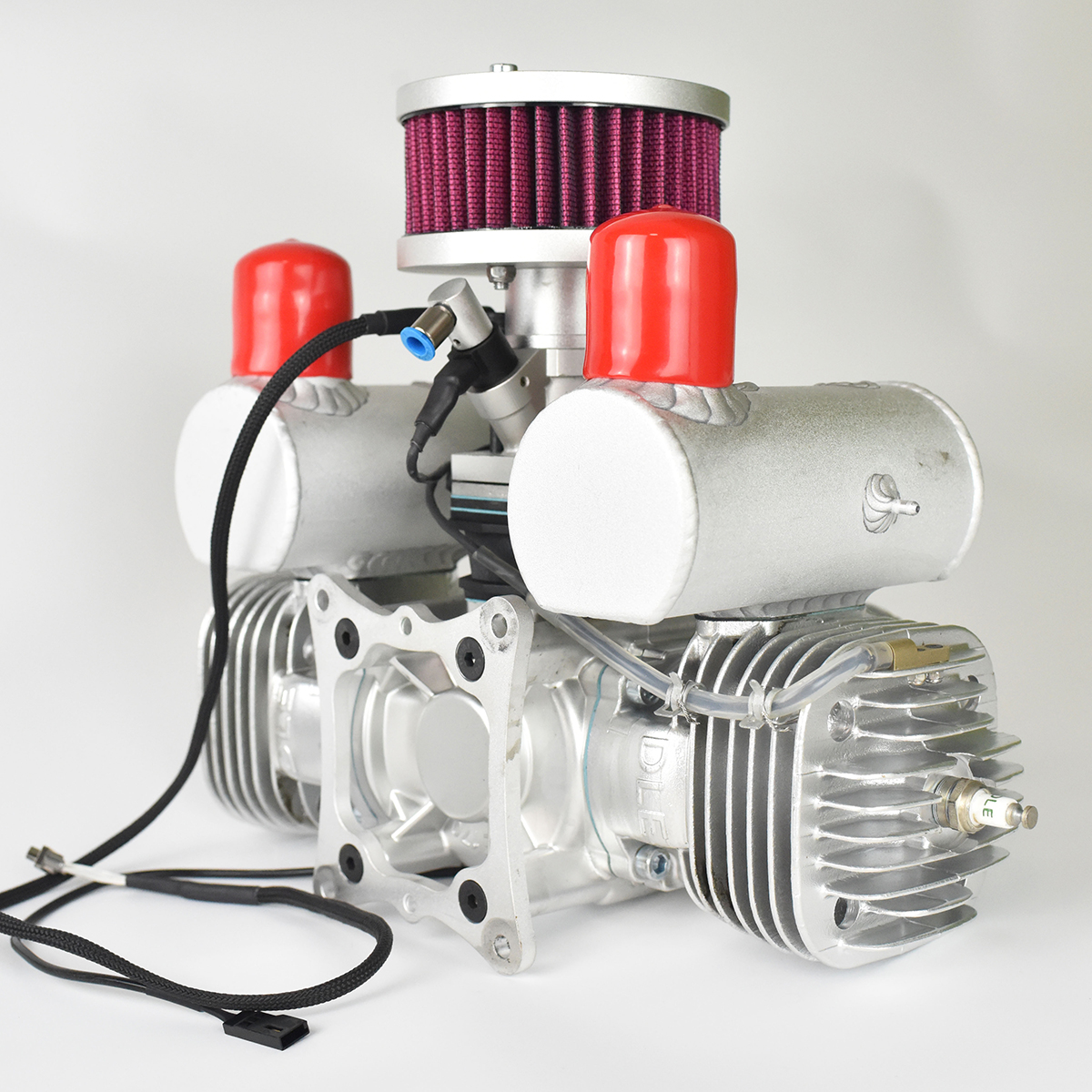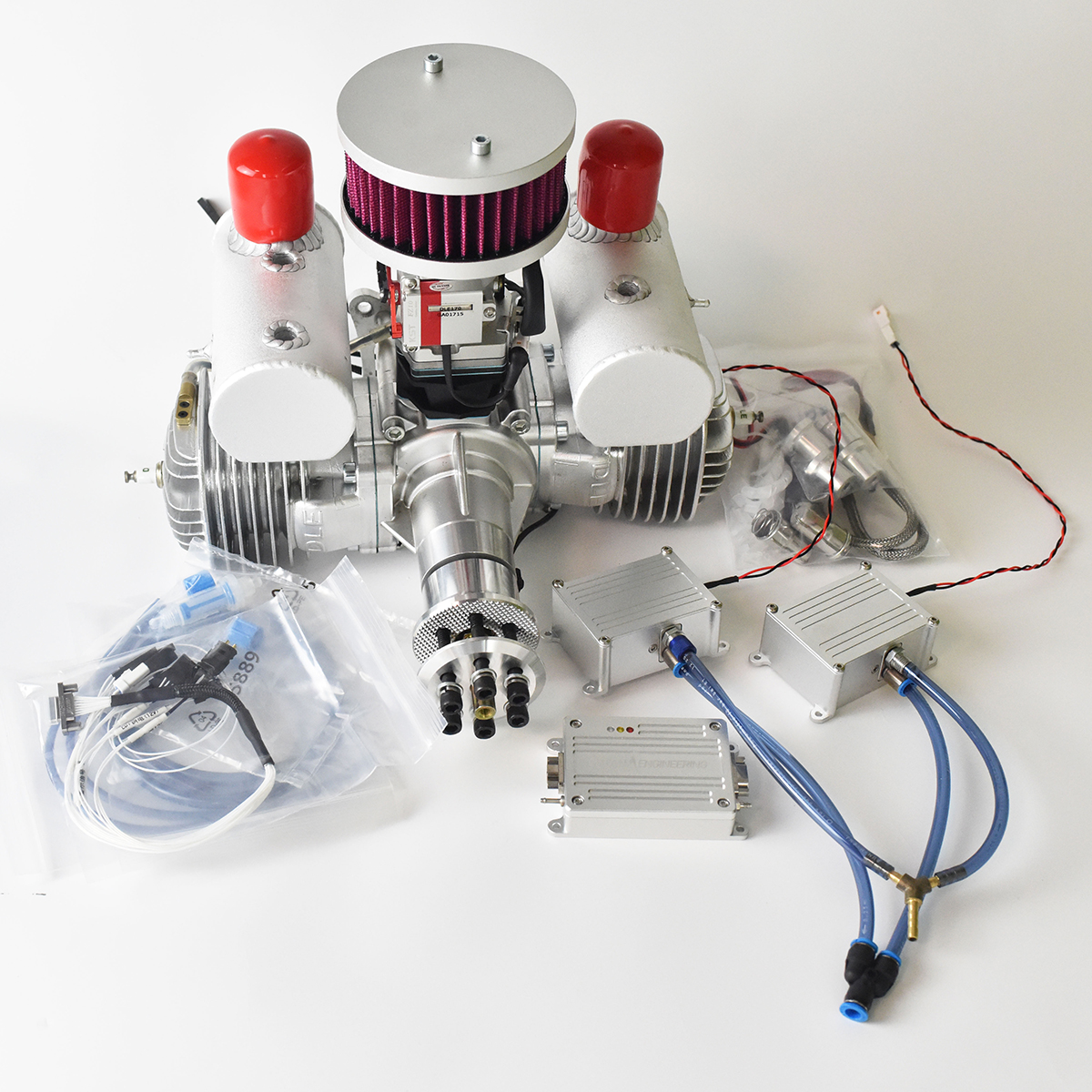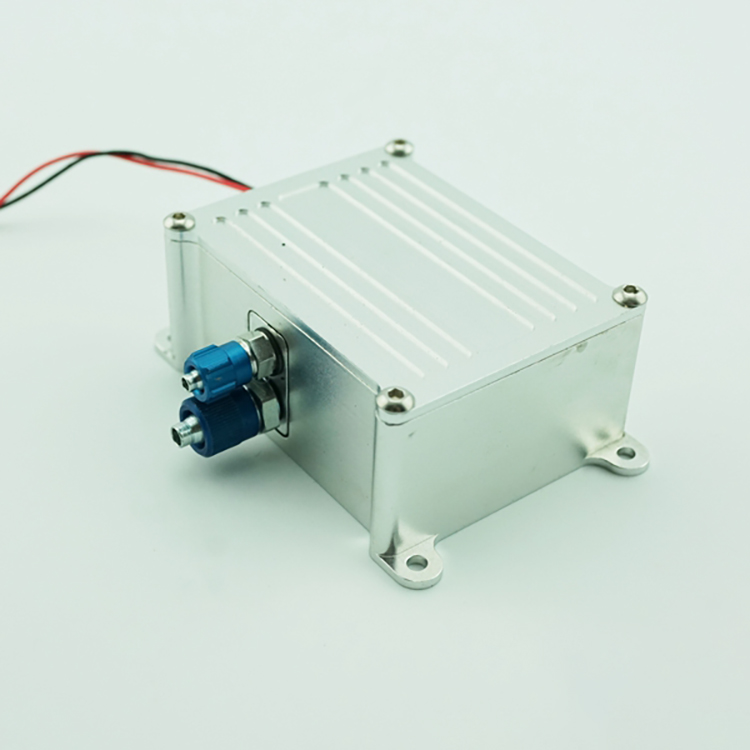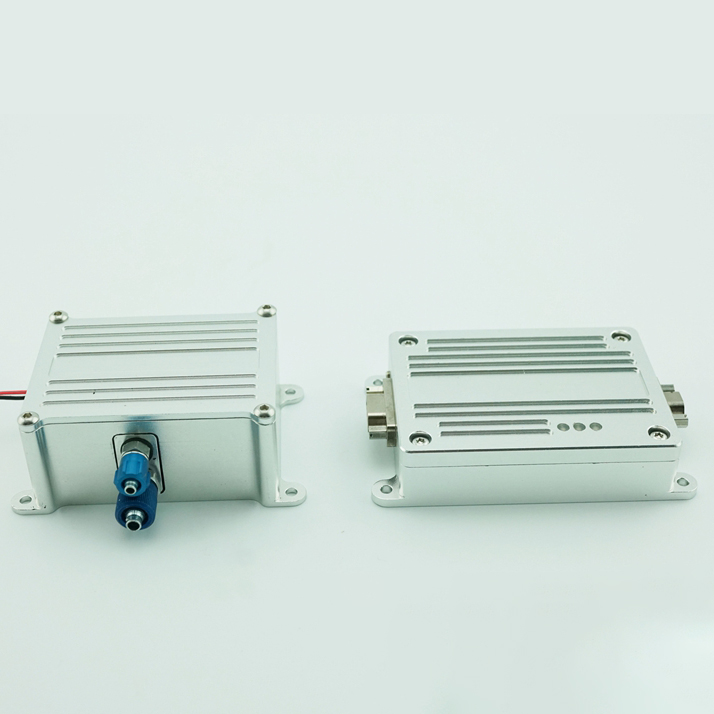DLE170EFI Gasoline Engine for RC Fixed-wing Aircraft
In an EFI system, the amount of fuel required by the engine is delivered through an ECU-controlled injector. The electronic control unit (ECU) performs the calculations required to optimize fuel delivery and ignition timing based on information from various sensors, including intake and cylinder temperature sensors, crankshaft position sensors, atmospheric and manifold pressure sensors, and throttle position sensors. The EFI system maintains the air-fuel ratio required for good engine operation based on operating conditions and engine requirements.
Advantages of Electronic Fuel Injection (EFI):
Lower fuel consumption
EFI systems have lower fuel consumption than carbureted engines. This is due to a sophisticated electronic control system that constantly calculates and adjusts the air/fuel ratio to maintain ideal combustion conditions. Small carburetors tend to make the engine mixture too rich (fuel-rich) both at low and high power outputs. Carburetors are particularly inefficient when used under continuously changing conditions because it is difficult to set the ideal air-fuel ratio for all throttle opening positions. Effective altitude compensation is difficult to achieve with a carburettor, but with EFI, altitude compensation is built into the system and works seamlessly. While fuel consumption reduction will vary by engine and conditions, fuel consumption will be reduced by 5% to 25% compared to a carbureted engine.
More Power
Engines equipped with EFI systems typically provide more power and torque than carbureted versions of the same engine. While it is difficult to optimize power and/or torque across the rpm range of a carbureted engine, EFI systems are able to optimize the air-fuel ratio and ignition timing throughout the entire operating rpm range while compensating for other factors to maintain continuous engine performance. Generally speaking, an EFI-equipped engine produces 5% to 10% more power than a carbureted version of the same engine.
More Reliability
Engine engines equipped with EFI systems are inherently more reliable than carbureted engines. This is due to the EFI control system's ability to maintain an ideal air-fuel ratio during all phases of flight. EFI systems are less prone to icing than carburetors. Random engine stalls, spark plug soaking, and non-ideal air-fuel ratios are eliminated. Carburetors are prone to failure. This requires constant adjustment and a greater risk of stalling during long periods of continuous operation due to drift in the settings. On the other hand, an EFI engine always maintains the same tune. This not only improves reliability, but also reduces the amount of routine maintenance required.
Good Startability
One of the main benefits of an EFI system is greatly improved cold and hot start performance. This is due to the system's ability to calculate the ideal air/fuel mixture, and the better atomization of the fuel droplets produced by the fuel injection compared to a carburetor. The engine is able to start in a wide variety of conditions, whether it is a hot summer or a cold winter, at sea level or at high altitudes, the engine can be easily started.
Full Altitude Compensation
The EFI system has an altitude compensation system. Constantly monitoring the atmospheric ambient pressure, the ECU continuously calculates the ideal air/fuel ratio for that altitude, while optimizing the air/fuel ratio for other variables (temperature, throttle position, etc.). Altitude compensation is difficult to achieve with a carbureted engine, especially if it needs to operate at different altitudes. This always requires a compromise carburetor needle adjustment, which means that at least part of the time the air/fuel mixture is not ideal, which will lead to excessive fuel consumption when the mixture is too rich, and may damage the engine when the mixture is too lean.
The throttle body designed for drones has a compact structure and an integrated wiring harness. The ECU uses a J30J aviation plug.
The ECU integrates an atmospheric pressure sensor and a negative pressure sensor to automatically adjust the fuel injection volume in real time according to the flight altitude. In actual testing at an altitude of 5,000 meters above sea level, all conditions are normal, and the engine full throttle speed is basically the same as that in the plains (the static tension is 60% of that in the plains).
The self-developed small automatic pressure control oil pump is used, which only needs to be connected to the oil inlet pipe and the oil outlet pipe of the injector, without a return oil pipe, which is easy to install and highly reliable. The oil pump consumes only 3 watts (12V, 250ma).
The electric start version of the DLE60 EFI adds a set of reduction gears, the starter motor uses a customized brushless motor, the propeller installation part uses 7075 aviation aluminum, and the reduction gears are all nitrided.
The engine is tested and basically run-in for two hours before leaving the factory, and can be directly installed and used without adjusting parameters.
ECU weight: 110g
Oil pump weight: 180g
Includes: DLE130 engine body
CDI ignition module
ECU controller
High-pressure oil pump
Wiring harness and accessories


